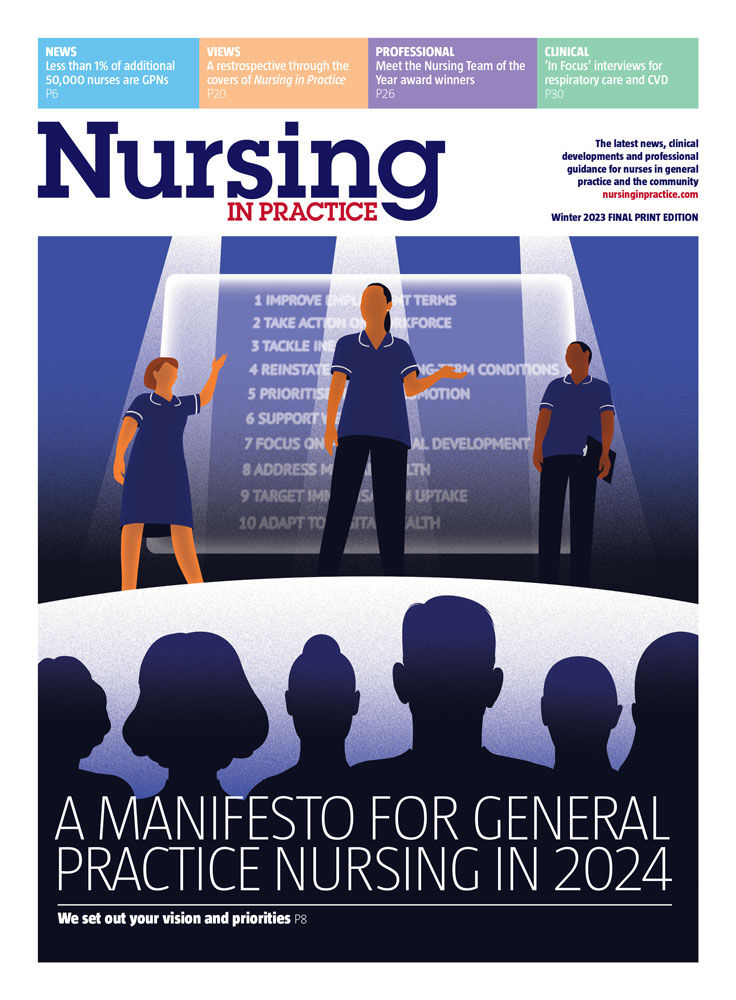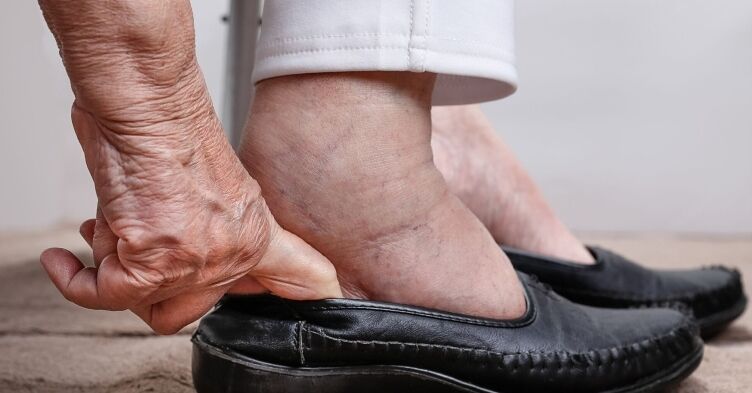How practice nurses can protect their patients
Safeguarding adults is everyone’s business and practice nurses have a professional duty as directed by the Nursing and Midwifery Council.1 Practice nurses should be able to promote and protect the rights of patients who are not able to protect themselves from harm or abuse. And they must not assume someone else will report a safeguarding concern. It is important that vulnerable adults are kept as safe as possible and are involved in safeguarding decisions. In line with this, the reporting of abuse needs to be done in a timely manner in accordance with local policies, procedures and legislation.
Safeguarding adults is a complex arena incorporating the assessment of individuals’ needs, and working with other agencies in a person-centred way, underpinned by the six key principles to avoid paternalistic approaches:2
- Empowerment: presumption of person-led decisions and consent
- Protection: support and representation for those in greatest need
- Prevention: prevention of harm and abuse
- Proportionality: the least intrusive response appropriate to the risk presented
- Partnerships: local solutions through services working with communities
- Accountability: accountability and transparency in delivering safeguarding
Getting the right training
Each organisation has a responsibility to ensure all staff are trained to an appropriate level in adult safeguarding. There are different levels of training, according to the individual’s responsibilities. NHS England3 is currently reviewing a framework of five levels of core competency skills.
Practice nurses are required to have a basic level of awareness (level 1 training) that addresses what abuse is and types of abuse (box 2) including female genital mutilation (FGM), self-neglect and radicalisation.
In addition practice nurses will learn:
How to recognise signs and symptoms of abuse.
Actions to take if they have concerns and where to report them.
An understanding of their local adult protection policies and procedures and those of the local authority.
Level 2 training is the minimal requirement for professionally qualified staff and will enable practice nurses to:
- Make safeguarding referrals to their local authority.
- Document concerns and complete referral forms.
- Know when to share information, within legislation and guidance.4
- Know the relevant legislation and policies.
- Understand the Government’s Prevent programme of radicalisation, including how to identify a victim of human trafficking and exploitation.
Training at level 3 is for practice nurses who will undertake safeguarding investigations, so they are able to act on information received about potential harm or abuse and can advise other members of the team who raise concerns.
Levels 4-5 are for professionals who take a leading responsible role in their area of practice (eg a named GP).
Refresher training is also a mandatory requirement for levels
1 and 2. NHS England3 proposes this should be done over a three-year period. The Nursing and Midwifery Council5 now requires evidence of continuing professional development as part of revalidation: attendance at safeguarding courses will contribute to this.
Your role and responsibilities
Practice nurses should be aware that abuse and neglect can happen anywhere – in a person’s own home, in a care home, hospital or another environment. They also should ensure they know who to contact if there is a safeguarding concern, which might be the duty or out-of-hours team in the local authority, or the police in the public protection unit when a crime is alleged. Reporting must be done on a ‘need-to-know basis’. Good record-keeping is vital.
Each organisation should have a named safeguarding lead.
In a practice, this is likely to be a GP, who will undertake the more complex aspects and can give a practice nurse guidance.
As well as attending safeguarding training, practice nurses must act on information relating to the Prevent agenda, report pressure ulcers grade 3 and 4, and report cases of FGM in line with the requirements of the Female Genital Mutilation Act 2003.
It is not always easy to spot the signs of abuse but practice nurses are often in the ideal position to recognise them. It is important practice nurses share their concerns, as a delay may mean the abuse continues. It is important they do not ignore concerns that could allow any abuse to carry on or escalate.
Practice nurses also need to understand how to communicate effectively with a patient so that safeguarding is made personal.
The individual is central to the process. Nurses should not ask leading questions or put words into a patient’s mouth when abuse is disclosed. It is important to reassure the patient throughout this difficult process; it may be distressing for the nurse to hear some of the information being disclosed. The practice nurse must inform the patient that they may need to share information with other parties, particularly when other vulnerable adults are at risk.
Knowing key policies and legislation
Practice nurses must be familiar with local safeguarding policies, protocols and procedures, which set out the duties and responsibilities of practitioners and agencies, including the legal requirements identified in the Care Act 2014. This now replaces the No Secrets guidance (Department of Health 2000), placing responsibility for safeguarding adult duties within the work of the local authority’s safeguarding adult boards (SABs), which now have a statutory footing. The SAB duties include ensuring enquiries are made into abuse and neglect, and safeguarding adults reviews (SARs) are undertaken where necessary. Practice nurses should know how to raise concerns under local SAB procedures.
Practice nurses also need to understand their legal obligations to meet the requirements of the Human Rights Act 1998, the Mental Capacity Act (MCA) 2005, the Equality Act 2010 and the Care Act 2014.
The Human Rights Act (1998) is at the heart of safeguarding and is reflected in the definition of abuse – ‘a violation of an individual’s human and civil rights by any other person or persons’.4 This act places a responsibility on public bodies, including the NHS, to uphold specific rights and protect people from the behaviour of others that may breach such rights eg neglect and poor hygiene, malnutrition and dehydration. This emphasises individuals have the right to live free from abuse and harm. In this context, nurses have to balance safeguarding with an individual’s ability to make choices and control their own care.
The MCA (2005) sets out a legal framework to protect individuals who do not have the capacity to make decisions. In these situations, safeguarding decisions should be made in the person’s best interest. For patients who have capacity, practice nurses need to take into account their wishes to be involved in protection decisions. This may present dilemmas.
The Equality Act (2010) protects those receiving care from being treated unfairly because of characteristics such as disability, age, gender and sexuality. Practice nurses have a duty to promote equality, ensuring individuals are not being disadvantaged.
The Care Act (2014) has introduced a statutory framework for safeguarding adults, providing a new definition of an adult at risk and setting out legal duties for the local authorities to make enquiries on behalf of a person of 18 years and over who:
Needs care and support (whether or not the local authority is meeting any of these needs).
Is experiencing, or at risk of, abuse and neglect.
As a result of those care and support needs, is unable to protect themselves from either the risk or the experience of abuse or neglect.
References
1. Nursing and Midwifery Council. The code. Professional Standards of practice and behaviour for nurses and midwives. Nursing and Midwifery Council, 2015
2. Department of Health. Safeguarding adults: The role of health service practitioners. Department of Health, 2011
3. NHS England. Safeguarding Adults: Roles and competences for health care staff – Intercollegiate Document. NHS England, 2016
4. HM Government. Information sharing. Advice for practitioners providing safeguarding services to children, young people, parents and carers. HM Government, 2015
5. Nursing and Midwifery Council. Revalidation. How to revalidate with the NMC. Nursing and Midwifery Council, 2015







